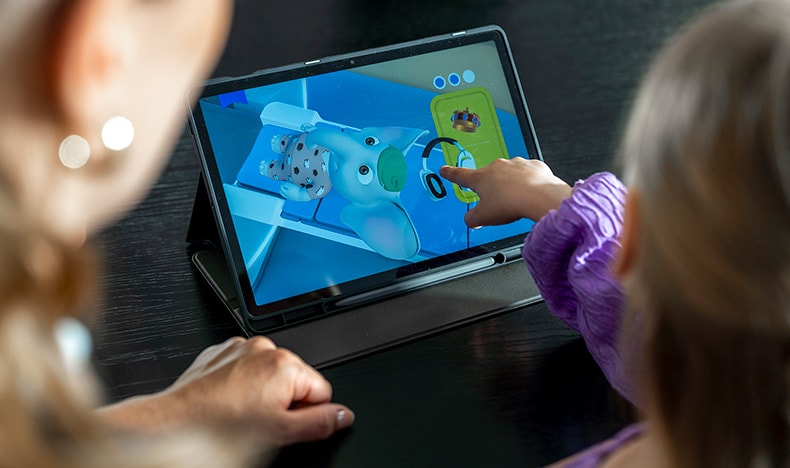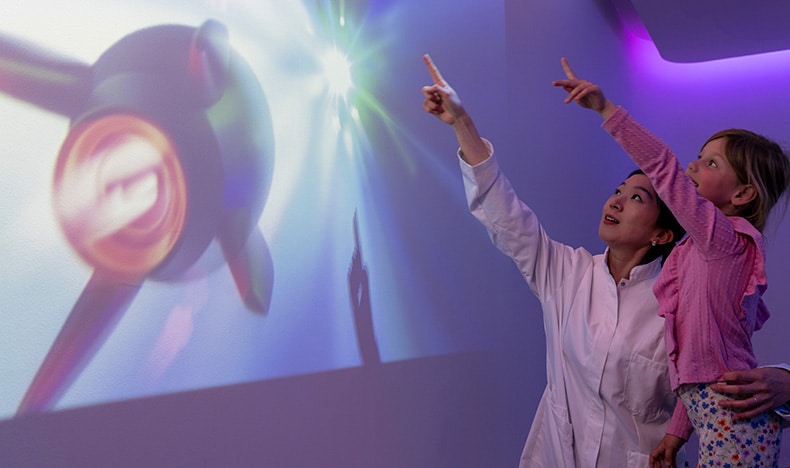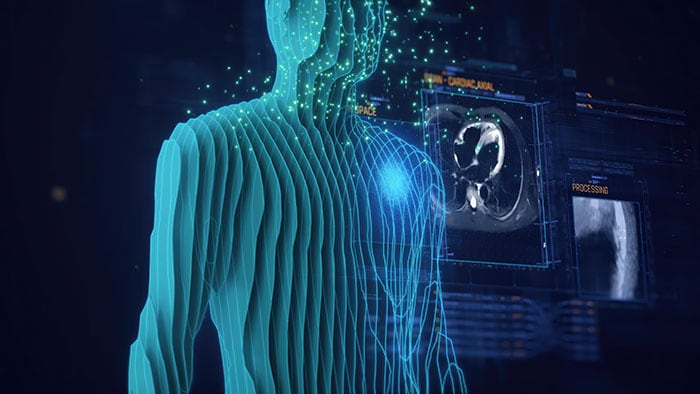How to design for a reassuring MR experience
Oct 28, 2025 | 2 minute read
Did you know that 45% of children require sedation or anesthesia to complete an MRI exam [1]? That’s because the experience can be intense – even frightening; lying still inside a confined space, surrounded by loud, unfamiliar sounds. As a designer at Philips, I’m working alongside my colleagues to change that. Our mission is to make the MRI experience as calming and reassuring as possible – for patients of all ages.
Several innovations have been designed and developed to help patients feel at ease before, during, and after the MR exam. But how do we come up with ideas to make this experience easier? The answer: through empathy—by putting ourselves in the patient’s shoes and asking, “What would this person really want?”

Let’s look at two innovations that have already made a positive impact on millions of patients worldwide. What are the insights behind these ideas, and how did we develop the solution to make sure that they reassure patients as much as possible?
Pediatric coaching: helping children to build confidence
Going through an MRI scan can be a daunting experience for children – it’s a lengthy procedure inside a large, noisy machine. As designers, while we couldn't change the fundamentals of the machine, we saw an opportunity to make a difference by helping children feel more in control. Through thoughtful coaching and guidance – for both children and their families – we aim to support them every step of the way, from home to the scanner. That's why we designed Philips Pediatric Coaching, a holistic, end-to-end coaching and guidance solution.
It all starts at home. A child taps open Scan Buddy and is welcomed into an interactive adventure. Using several child friendly teaching methodologies, the app explains everything they need to know about MRI - even the loud, jarring sounds - turning uncertainty into curiosity. At the hospital, they can play with the Kitten Scanner, scanning animal characters and learning more through play. When it’s time for the real scan, calming audio-visual guidance and in-bore movies help the young patient stay relaxed and focused. And afterward, a certificate, poster, or postcard celebrates their bravery—because every step forward deserves to be recognized.
You could say that Pediatric Coaching reimagines the whole MRI experience. It is no longer something that has to be endured in the hospital, but a seamless, holistic journey that begins at home well before the scan and continues through to after it’s completed. One of our key learnings is that children experience the world differently. They think, fear, and process language in ways adults often overlook. So pediatric design isn’t about shrinking grown-up solutions – it’s about reimagining them. Take language. A contrast agent described as “dye” can sound like “die”. “Slices” – standard MRI terminology – can conjure disturbing mental images. Even telling a child “Ten minutes” can be meaningless without a reference point. That’s why every image, instruction, and word was carefully chosen to fit a child’s world.”
It helps children stay calm and cooperative during scans, increasing the chances of getting the image right the first time. Children feel seen, heard, and taken seriously. That’s the power of empathetic design.
The Pediatric Coaching solution proves that good design goes beyond friendly looks – it transforms experiences. By turning fear into curiosity and stress into engagement, it helps children stay calm and cooperative during scans, increasing the chances of getting the image right the first time. With fewer rescans, lower costs and happier kids, everyone feels the difference: parents, professionals and most of all, children. They feel seen, heard, and taken seriously. That’s the power of empathetic design.

Ambient Experience: designing for emotion to improve patient outcomes
Ambient Experience creates an atmosphere with visual, light, and sound elements that makes patients feel at ease before, during and after an MRI scan. The roots of this solution trace back to the early 2000s, when a group of visionary designers began exploring how hospital environments could better support emotional well-being.
One of the design leaders involved at the time was Jos Stuyfzand, who helped pioneer this approach. “We learned from medical feedback that a calm, low-stress patient often experiences fewer complications during and after surgery,” Jos recalls. “And so, we asked: What if we designed for emotion, not just function? Could the hospital journey bring comfort – from first impression to a space that feels calm, human, and safe?”
Together with a multidisciplinary team of designers, researchers, and lighting experts, Jos and his colleagues immersed themselves in the clinical environment – observing and mapping patient journeys and sharing insights through experience flows.
They set out to redesign high-stress areas like waiting rooms, pre-operating areas, and recovery rooms. “For example, using soft blue tones and rounded corners in windowless spaces where patients waited before surgery to reduce anxiety. Hiding cables and eliminating clutter to create a sense of order and space. Mimicking the sky with illuminated ceiling panels to offer patients a subtle connection to the outside world. Simple, intentional design choices to create a calming effect.”

More on the MR experience innovation journey can be found in the full interviews featured in the book Philips Design | 100 Years of Impact, which can be ordered here.
Sources [1] Stunden C, et al (2021). Comparing a Virtual Reality-Based Simulation App (VR-MRI) With a Standard Preparatory Manual and Child Life Program for Improving Success and Reducing Anxiety During Pediatric Medical Imaging: Randomized Clinical Trial.







